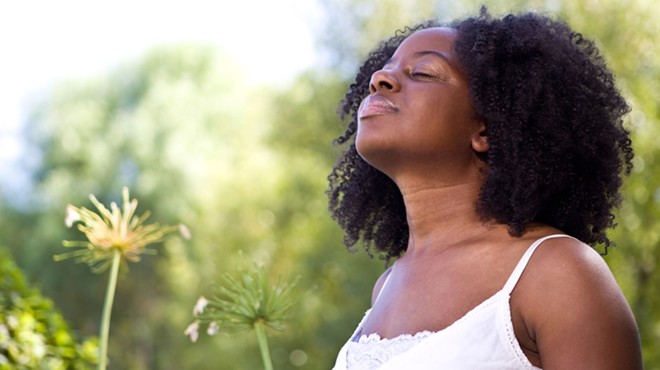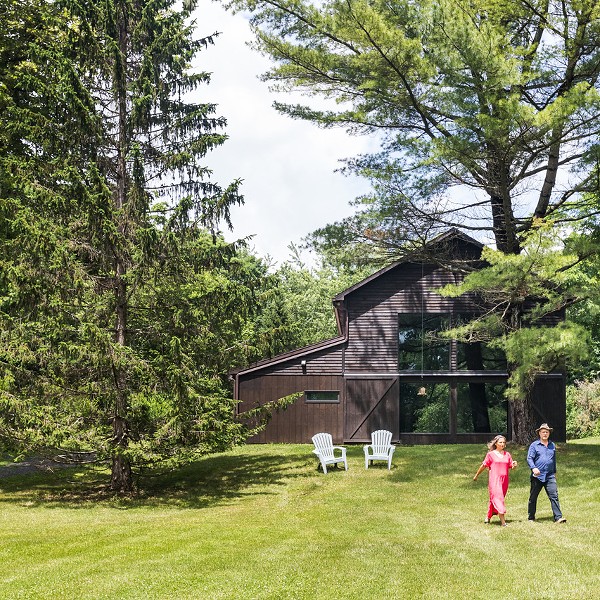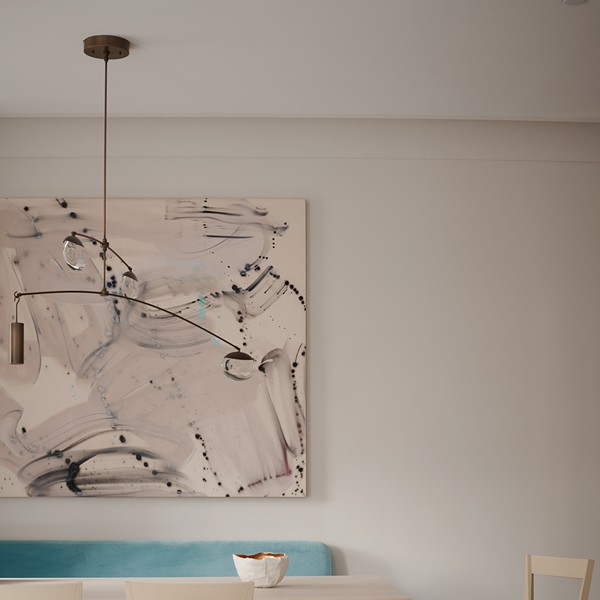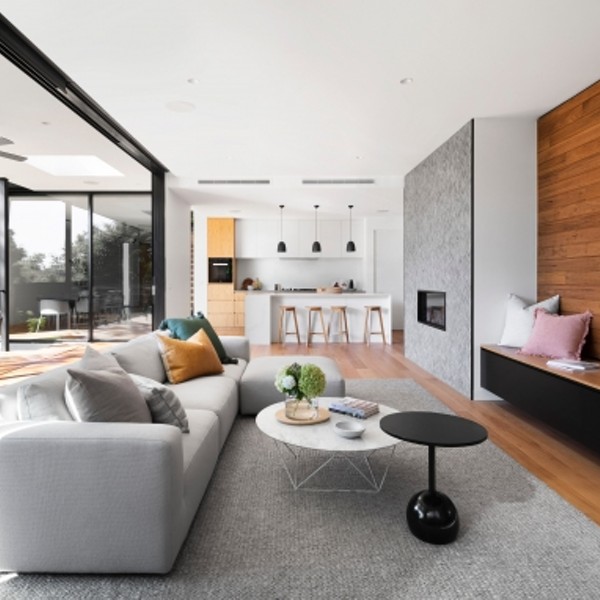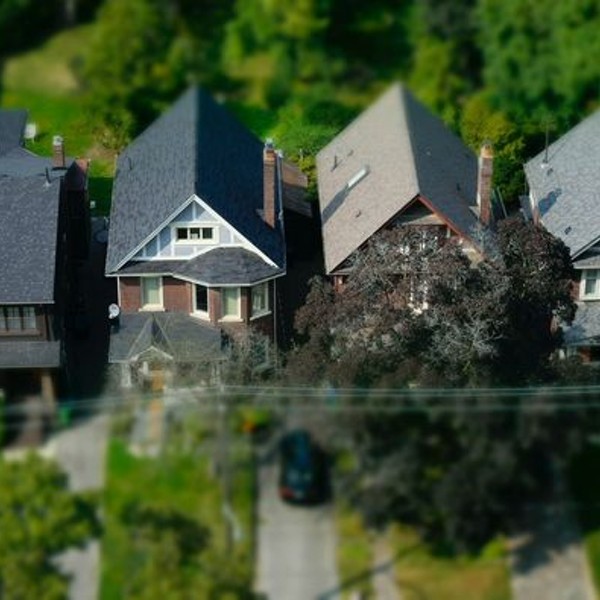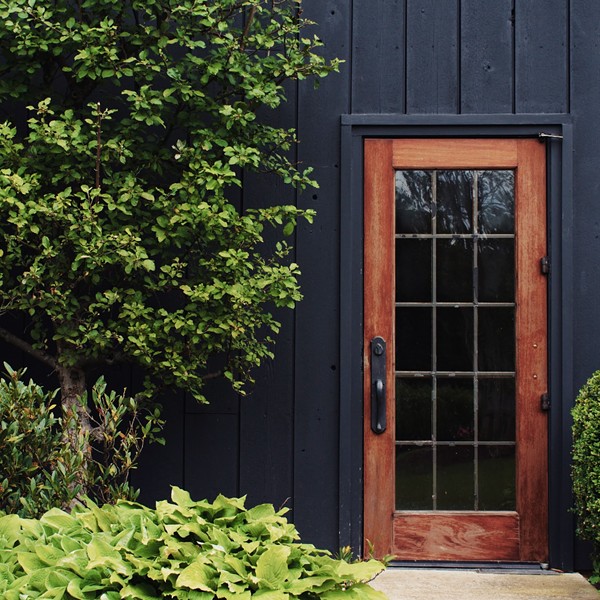If you enjoy taking a hike in the woods, lingering in your garden, or relaxing by the lake, you may be doing more for yourself than you realize. Research continues to back up Harvard biologist E. O. Wilson’s theory of biophilia, which inextricably links human happiness with nature. Ponder this: Have you ever paid more to spend a night in a hotel room with a view of the ocean or mountains? Sent flowers to a sick friend in the hospital? Felt gloomy being cooped up in the midst of winter? Studies suggest that exposure to natural elements like wood, water, and plants can lift your mood, reduce stress, and make you more productive. With colder, shorter days approaching, consider the addition of these natural elements—whether a complete room revamping or a couple of small touches to perk up your spirit and the ambiance of your home.
Wood you like to feel better?
Different kinds of flooring, sculpture, and even lighting accents made of wood can bring an earthy feel to any room. Dominic Carota, president of Blair House Interiors of Latham, says that growing concern for the environment coupled with an increased desire for natural looks has put some interesting options for flooring in the limelight.
“What we’ve been finding with our clients is that they’ve determined for us what the mission is for their home—often they want to make environmentally responsible choices, and our job is to do that,” Carota says. For clients that request hardwood floors, Blair House Interiors has been working with Carlisle Wide Plank Floors, which uses reclaimed wood from old barns and other structures. The allure of this option is not only the environmental benefit of recycling wood, but the opportunity to admire the historical character of rare and even extinct wood—like the antique chestnut boards that the company recovers from barns, farmhouses, and other old buildings.
Carota says another trend in natural flooring is cork, which is made from the bark of the cork oak. The tree is able to survive and regenerate new growth, making it an optimal choice when considering sustainability. Cork tiles come in a variety of looks, resist pressure and moisture, are softer and warmer underfoot than most other flooring, and have excellent acoustic properties that absorb vibration.
Both Carota and Barbara DeStefano, an interior designer and certified Feng Shui consultant in Port Ewen, say that they have become fans of bamboo flooring for its sustainability and visual appeal. “I love the look of bamboo floors,” DeStefano says. “And I love using them because they’re a very sustainable element. There are many different varieties and they’re absolutely beautiful.” Like cork, bamboo can be harvested without killing the root, allowing additional growth.
If you’re not planning a major renovation, think about integrating wood objects on a smaller scale. Raj Singh, owner of Antara Home in Albany, has added an assortment of dried natural elements to his lineup of home goods. The line will include bamboo and manzanita, which has thick, twisty branches, as well as dried eucalyptus and willow. Singh says these items, which range in height from two to six feet and are called “branch candelabras,” make dramatic centerpieces or hall decorations that help soften the feel of a room. “They really blur the line between sculpture and plant and they’re very well suited for a contemporary environment,” Singh explains, adding that they would flatter any home that blends Old World craftsmanship and contemporary design.
Other wood objects that can add a soft touch are light fixtures, furniture, and even a wood-related textile. Carota says that Blair House has sourced wooden sconces and chandeliers that are painted to appear weathered and antiqued. DeStefano helped design an office in which she placed a desk created from a planed and honed tree trunk that came from Fabulous Furniture in Boiceville, which creates specialized pieces of furniture that retain the natural lines and imperfections of the hardwoods the shop works with. Carota says natural textiles are becoming popular—tensile, a material made of cellulose and a byproduct of wood processing, is gaining momentum along with hemp, flax, linen, and organic cottons. Carota has been using some of these fabrics to cover walls instead of painting them. “It gives a very nice acoustic element and it also is great aesthetically,” he says.
Room with a view
When DeStefano is working with a client, she says there are three things she considers. One: What are the attributes of the structure? Two: What are the qualities of her client? And three: What surrounds the space?








